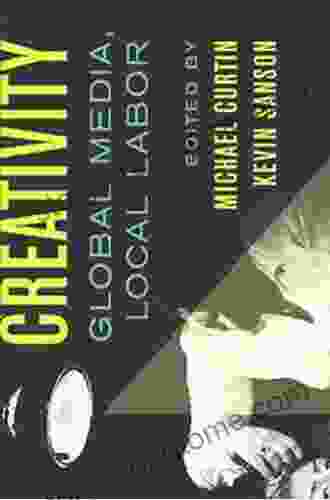Vertical Development in the Workplace: Expand the Possible

Vertical development is the ability to expand our consciousness and grow into more complex and mature ways of being. It is a lifelong process that involves a fundamental shift in our worldview and our understanding of ourselves and others.
Vertical development has been studied by psychologists and philosophers for centuries, and there is a growing body of research that supports its importance in the workplace. Studies have shown that vertically developed leaders are more effective, creative, and innovative than their less developed peers. They are also more likely to be successful in their careers and to make a positive impact on their organizations.
Vertical development occurs in four stages, each of which is characterized by a different way of thinking and relating to the world. The four stages are:
4.6 out of 5
| Language | : | English |
| File size | : | 6375 KB |
| Text-to-Speech | : | Enabled |
| Screen Reader | : | Supported |
| Enhanced typesetting | : | Enabled |
| Word Wise | : | Enabled |
| Print length | : | 40 pages |
- Egocentric - The egocentric stage is characterized by a focus on the self. People in this stage are primarily concerned with their own needs and wants, and they have difficulty understanding the perspectives of others.
- Sociocentric - The sociocentric stage is characterized by a focus on the group. People in this stage are concerned with how they fit into the group and how they can contribute to the group's goals. They are also more aware of the perspectives of others, but they still tend to see the world in terms of "us" versus "them."
- Worldcentric - The worldcentric stage is characterized by a focus on the whole world. People in this stage are concerned with the well-being of all people and all living things. They see the world as a interconnected system, and they understand the importance of sustainability and cooperation.
- Unitive - The unitive stage is the highest stage of vertical development. People in this stage have a deep understanding of the interconnectedness of all beings. They see the world as a place of love and compassion, and they are committed to living in harmony with others.
There are a number of things that organizations can do to promote vertical development in the workplace. These include:
- Creating a culture of respect and inclusivity. A culture of respect and inclusivity is essential for vertical development. When people feel respected and included, they are more likely to open up to new ideas and perspectives.
- Providing opportunities for growth and development. Organizations can provide opportunities for growth and development through training, coaching, and mentoring programs. These programs can help people to expand their consciousness and develop new skills and perspectives.
- Encouraging collaboration and teamwork. Collaboration and teamwork can help people to develop new perspectives and to see the world from different angles. When people work together, they can learn from each other and grow in their understanding of the world.
- Providing feedback and support. Feedback and support are essential for vertical development. When people receive feedback, they can learn from their mistakes and grow. When people have support, they are more likely to take risks and to try new things.
Vertical development is a powerful tool that can help organizations to create a more productive, innovative, and successful workplace. By promoting vertical development, organizations can help their employees to reach their full potential and to make a positive impact on the world.
Dr. Susanne Cook-Greuter is a leading expert on vertical development. She is the author of several books on the topic, including Vertical Development in the Workplace: Expand the Possible. Dr. Cook-Greuter is a sought-after speaker and consultant, and she has worked with organizations around the world to promote vertical development.
4.6 out of 5
| Language | : | English |
| File size | : | 6375 KB |
| Text-to-Speech | : | Enabled |
| Screen Reader | : | Supported |
| Enhanced typesetting | : | Enabled |
| Word Wise | : | Enabled |
| Print length | : | 40 pages |
Do you want to contribute by writing guest posts on this blog?
Please contact us and send us a resume of previous articles that you have written.
 Book
Book Novel
Novel Page
Page Chapter
Chapter Text
Text Story
Story Genre
Genre Reader
Reader Library
Library Paperback
Paperback E-book
E-book Magazine
Magazine Newspaper
Newspaper Paragraph
Paragraph Sentence
Sentence Bookmark
Bookmark Shelf
Shelf Glossary
Glossary Bibliography
Bibliography Foreword
Foreword Preface
Preface Synopsis
Synopsis Annotation
Annotation Footnote
Footnote Manuscript
Manuscript Scroll
Scroll Codex
Codex Tome
Tome Bestseller
Bestseller Classics
Classics Library card
Library card Narrative
Narrative Biography
Biography Autobiography
Autobiography Memoir
Memoir Reference
Reference Encyclopedia
Encyclopedia Ling Lee
Ling Lee Lillie Weiss
Lillie Weiss Lee A Kirkpatrick
Lee A Kirkpatrick Leland Gregory
Leland Gregory Madelijn Strick
Madelijn Strick Leszek Buszynski
Leszek Buszynski Lindsey Pogue
Lindsey Pogue Lisa Solod
Lisa Solod Lori Henson
Lori Henson Lynne Reid Banks
Lynne Reid Banks M A Taofik
M A Taofik Mahmood Nahvi
Mahmood Nahvi Roma Downey
Roma Downey Virginia M Friedman
Virginia M Friedman Leigh Davis
Leigh Davis Rutherford M Poats
Rutherford M Poats Leonardo Moreno
Leonardo Moreno Richard Yates
Richard Yates Lila Corwin Berman
Lila Corwin Berman Liz Wilson
Liz Wilson
Light bulbAdvertise smarter! Our strategic ad space ensures maximum exposure. Reserve your spot today!

 Efrain PowellDiscover the Invaluable Notes and Queries: Index of Volume May-December 1850,...
Efrain PowellDiscover the Invaluable Notes and Queries: Index of Volume May-December 1850,... Jake PowellFollow ·8.1k
Jake PowellFollow ·8.1k Chinua AchebeFollow ·8.1k
Chinua AchebeFollow ·8.1k Dillon HayesFollow ·3.1k
Dillon HayesFollow ·3.1k Charles DickensFollow ·6.3k
Charles DickensFollow ·6.3k Easton PowellFollow ·5.4k
Easton PowellFollow ·5.4k Hayden MitchellFollow ·10.1k
Hayden MitchellFollow ·10.1k James HayesFollow ·11.4k
James HayesFollow ·11.4k Travis FosterFollow ·8.8k
Travis FosterFollow ·8.8k

 E.M. Forster
E.M. ForsterThe Real Blueprint to Short-Term Rental Success
Are you ready to create a...

 Mark Mitchell
Mark MitchellMidas Touch: The Astrology Of Wealth
Are you ready to tap into the cosmic forces...

 Grant Hayes
Grant HayesPrecarious Creativity: Unpacking the Global Media and...
In the ever-evolving landscape of the...

 Cameron Reed
Cameron ReedGuru Govind Singh: A Life of Courage and Inspiration for...
Guru Govind Singh, the tenth Sikh guru,...

 Yukio Mishima
Yukio MishimaCastles & Shapes: The Enchanting World of Ris...
In the realm of...

 Jerome Blair
Jerome BlairGolden Keys To Jyotisha Volume Ten: The Ultimate Guide to...
Embark on an...
4.6 out of 5
| Language | : | English |
| File size | : | 6375 KB |
| Text-to-Speech | : | Enabled |
| Screen Reader | : | Supported |
| Enhanced typesetting | : | Enabled |
| Word Wise | : | Enabled |
| Print length | : | 40 pages |










